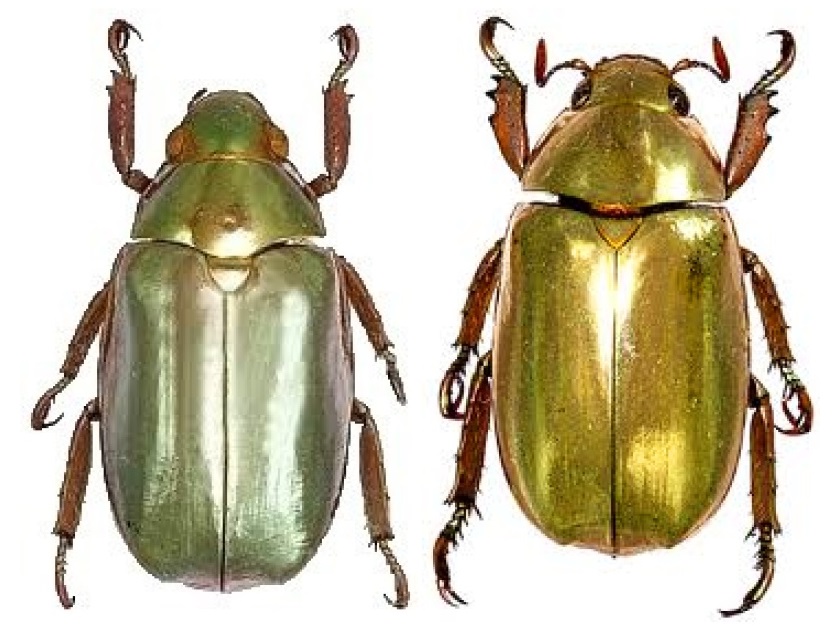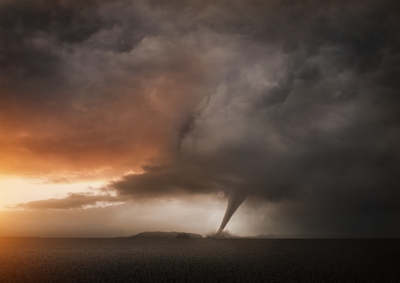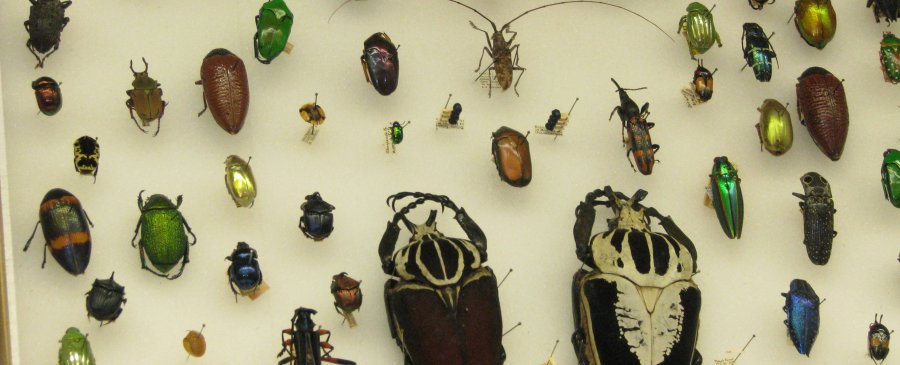From their lookout in the White Mountains of the western United States, the bristlecone pines have seen it all. They watched from afar as the Confederates suffered heavy losses at Union hands; they heard the scratch of Shakespeare's quill; they heard the first fireworks bang at their invention in China; they listened to the grinding of stones as the Egyptians erected the Great Pyramid at Giza. Through practically every point in human history -- for the last 5,000 years -- these trees have remained steadfast witnesses, rooted in the soil.
On a daily basis, entomologists scoop up tarantulas lovingly and avidly spear dead beetles with pins. But there is one type of bug that no amount of affection for creepy-crawlies can redeem in their eyes: the brown marmorated stink bug.
It is dark and almost midnight on the last day of the year. Suddenly, a boom and flash of light announce the arrival of an intruder into this monochrome world: RED. The color sprouts up above, like a fountain pen spattering an inky hue that stains the sky.

When it comes to bugs, I'm pretty squeamish. So when Bob Matthews, a Professor Emeritus of Entomology at the University of Georgia, handed me two clay tubes fused together and told me to break them open with tweezers to look for paralyzed spiders, fly cocoons, and live wasp larvae, I really didn't want to do it.
Imagine lying on the forest floor at night, staring up into a canopy twinkling with jewels. Some are bright, hard gold. Many are emerald green, or shine like a polished granny smith apple under a spotlight. A very few are ruby red. You reach up to pluck one of them from the dark trees. But as you extend your hand, the gem whirs away to a point out of reach.

Anticipation mounted before the birth of Bao Bao the giant panda at the National Zoo. With populations dwindling to dangerously low levels worldwide, the zoo was eager to see another bear added to the family. Consequently, Bao Bao's healthy arrival last August was cause for celebration. Michelle Obama made a video when she was named, and crowds gathered at the zoo to catch a glimpse of her sleepy, furry form.
Bees are known to be highly intelligent creatures, but in a way, they are entirely oblivious. Buzzing among plants, a bee searches for pools of nectar to eat, slurping the stuff out of flower centers. But while carrying out this humdrum foraging routine, the bee inadvertently acts as a transport mechanism vital to hundreds of organisms. In making its way into plants' nectar repositories, a bee brushes past the flower parts that produce pollen. Sticky granules lodge among hairs on the insect's hind legs; the bee takes off with these miniscule stowaways attached.
Social media and science education are not two phrases that often intersect. However, here at the Smithsonian Science Education Center we are working on digital initiatives to help provide new types of teacher resources through various social media channels. Since the SSEC's mission is to improve the learning and teaching of science for all students in the United States and throughout the world, going digital is a great way to enhance our print resources and reach more people. Social media platforms can provide teachers a multitude of resources and guides to teach various materials.
Do you know where the red-eyed tree frog calls home? Play our newest game based on animal habitats to learn! Explore the desert, coral reef, jungle, and marsh to discover where many animals live by matching each animal to their correct habitat!
Also, check out our infographic below to see an example of what you can expect to learn while playing HABITATS!

Why is the Black Sea black?
The sea was first named by the ancient Greeks who called it "Inhospitable Sea." The sea got this reputation because it was difficult to navigate, and hostile tribes inhabited its shores. Later, after the successful development of the coast by Greek colonists, the sea was renamed "Hospitable Sea."
The Black Sea has a depth of over 150 meters, and its waters are filled with hydrogen sulfide for almost two kilometers. Therefore, in the deepest layers of its water there are no living things except sulfur bacteria.
Love Valentine's Day? Love science? Then we have you covered! Check out our Valentine's Day Science Pinterest board for an assortment of Valentine's Day themed science activities, experiments, jokes, cards, and more.
Dr. Robyn M. Gillies is a professor in the School of Education at The University of Queensland, Brisbane, Australia. For over 20 years, she has researched the effects of cooperative learning on students' learning in science, mathematics, and social science content areas at the elementary and secondary levels. She has researched inquiry-based science in the classroom and has published her findings in many international journals, including the International Journal of Educational Research, Pedagogies: An International Journal, and Teaching Education. The extent of Dr.
Evolutionary relationships and phylogeny can be a confusing topic even for some college students, so how do K-12 science teachers navigate this sometimes frustrating topic and find the resources to help them share this important knowledge with their students?
I was talking with some of the teachers during the Biodiversity Academy week here in Washington D.C. about software programs or online resources that would be appropriate for middle school or elementary audiences. Here are a few online resources I found that may be helpful in those settings:
Citizen science projects engage members of the public in scientific research. With the Next Generation Science Standards' emphasis on science and engineering practices, these projects provide an ideal way to involve students in the process of scientific investigation. An abundance of mobile apps makes participation in citizen science projects easier than ever and allows data entry in the field. Here is a selection of apps that we found particularly useful for engaging students.
The tragedy brought about by natural disasters will leave your students with a lot of questions. Even students not directly affected by a damaging storm may find images of a twister and its aftermath scary.

As we enter the summer season, we must begin to look ahead to the next academic year. As with every school year, 2013-2014 will present educators and administrators with new students, new challenges, and new opportunities. In particular, K-12 educators will have at their disposal guidelines for enhancing and deepening their science curricula -- the Next Generation Science Standards (NGSS).
- previous
- 3 of 3

